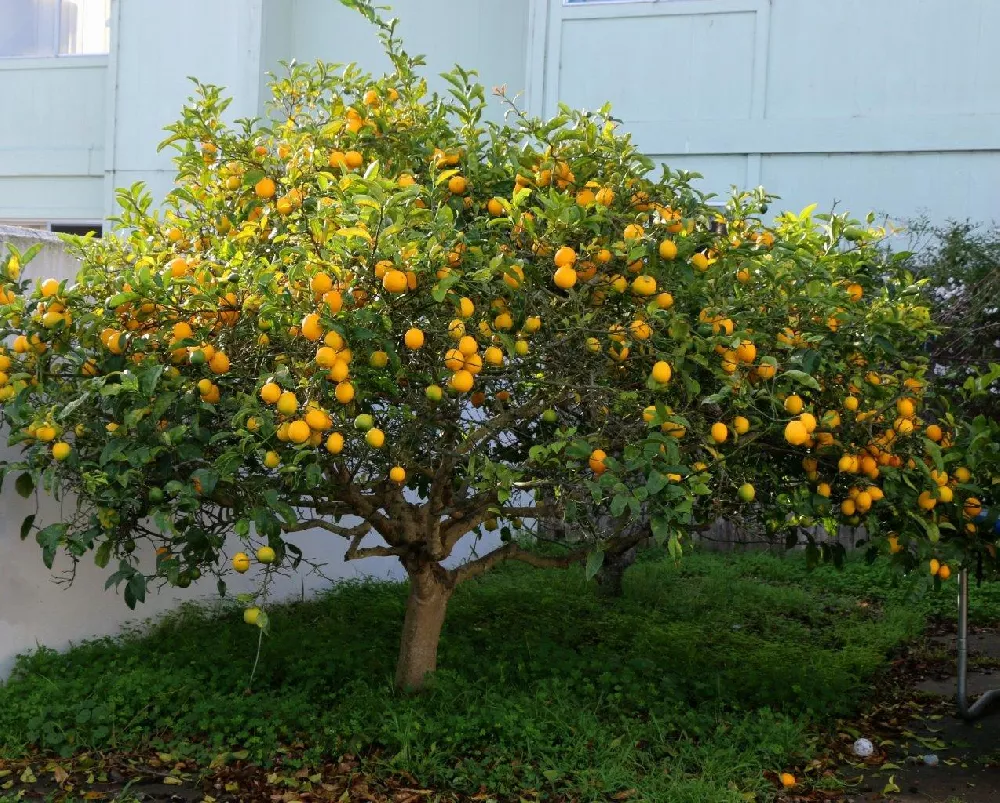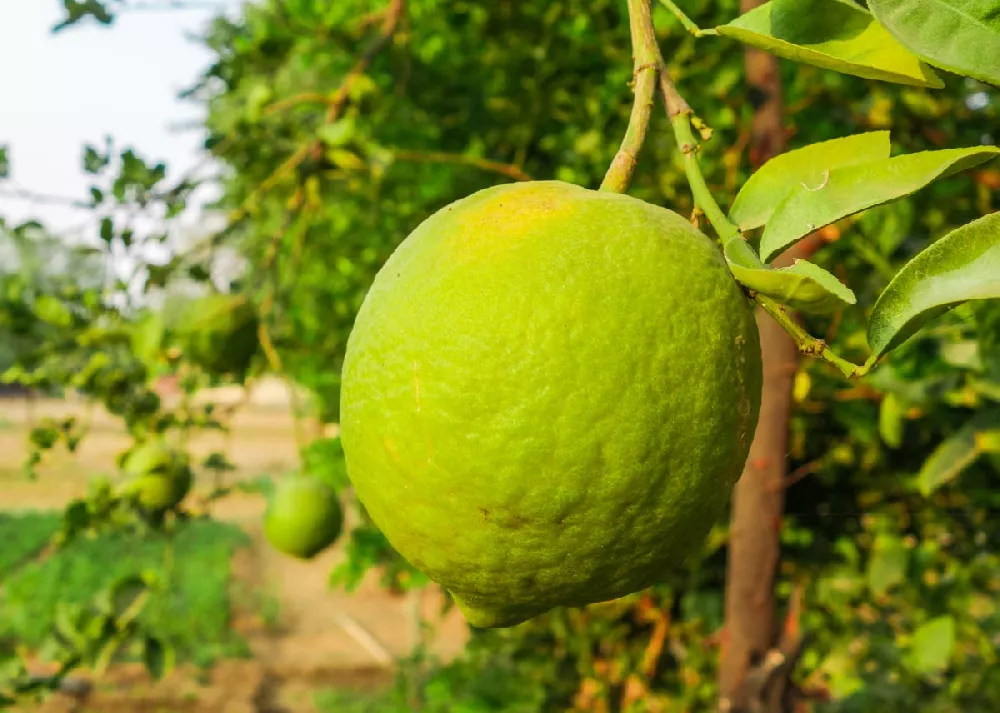- Home >
- Lemon Trees
Lemon Trees for Sale - Buying & Growing Guide
Filters
Price Range
Growing Zones
Plant Type
Sunlight
Mature Height
Plant Characteristics
24 Results
-
Growing Zone(s): 2,3,4,5,6,7,8,9,10,11,12$17.95
-
Growing Zone(s): 3-11 / 9-11$81.95
$114.95Save up to 28% -
Growing Zone(s): 3-11 / 9-11$99.95
$159.95Save up to 37% -
Growing Zone(s): 3-11 / 9-11$59.95
$77.95Save up to 23% -
Growing Zone(s): 3-11 / 9-11$70.95
$78.95Save up to 10% -
Growing Zone(s): 3-11 / 9-11$99.95
$114.95Save up to 13% -
Best SellerGrowing Zone(s): 3-11 / 9-11$65.95
$99.95Save up to 34% -
Growing Zone(s): 3-11 / 9-11$69.95
-
Growing Zone(s): 3-11 / 9-11$78.95
$94.95Save up to 16% -
Growing Zone(s): 3-11 / 9-11$41.95
$67.95Save up to 38% -
Sold OutGrowing Zone(s): 4-11 patio / 8-11 outdoors$41.95
-
Sold OutGrowing Zone(s): 4-11 patio / 8-11$209.95
Lemon Trees – Buying & Growing Guide
Lemon trees are the full package. They are attractive landscape trees with glossy green leaves and an attractive shape. Lemon trees produce a delicious fruit that is a must-have for cooks and bakers. They also adapt easily to potted life, which means they can play the role of a houseplant.
How to Grow Lemon Trees
How to plant lemon trees
Your lemon tree should thrive outdoors when you live in USDA hardiness zones 9-11, although you may have luck if you are in zone 8 and plant in a protected spot. Place your lemon tree where it will get at least six to eight hours of sun a day and preferably in a slightly acidic soil.
Dig a hole that is twice as deep and wide as the root ball of your lemon tree. Mix some good compost into the soil at the bottom of the hole. Unpot or unwrap your tree and tease out any roots that are circling the root ball to avoid strangling the plant. Place it in the hole so that the top of the root ball is roughly level with the soil grade. Backfill the hole with the topsoil you removed when you dug the hole and mix in compost.
Gently tamp down the soil around your tree so there are no air pockets. Water well, let the water sink in, and then give it another drink. Water several times a week for the first month or so after planting.
How to achieve maximum results
To achieve maximum results with your lemon tree remember that, like all citrus plants, it loves the sun. Lemon trees are native to the warmer regions of Asia, and thus they thrive best in tropical or subtropical areas. Do not despair if you are in a northern climate. Lemon trees, especially dwarf varieties, make excellent houseplants, and will grow indoors with minimal care as long as they get adequate light.
How to Care for Lemon Trees
Watering and nutrients
Lemon trees need at least one inch of water a week. When you do notreceive that as rain give your tree some supplemental water. It is better to give it one deep watering a week than to spread it out with shallow waterings on several days.
Your lemon tree will thrive with regular applications of a slow release all purpose fertilizer. Follow the package directions for frequency of use. Most fertilizers will tell you to apply it several times during the growing season. Mulching your tree with a layer of well seasoned compost once a year will help stimulate growth.
Pollination
Pruning Lemon trees are monoecious, meaning that a single tree will have both male and female flower parts. Thus, you can have fruit even if you only have one tree. Outdoors, bees will tackle the work of pollinating your lemon tree. When your tree is indoors however, you will have to hand pollinate using a paintbrush to gather pollen from the flower’s pistil (the female part of the flower) and brush it on the stigma (the male part).
Lemon trees do not need a lot of pruning. You can prune periodically for a nice shape, clipping out any wayward branches. You should also remove dead and diseased branches, and those that rub against other branches. When the center of the tree seems crowded, so that air is not able to circulate through the whole canopy, then prune out a few of the branches in the middle to let light and air in.
Pests, diseases, and animals
Aphids may collect on the undersides of the leaves, and can be controlled with insecticide or a blast of water from the hose. Citrus whitefly lay their eggs on the tree, and can go through several generations in a single growing season. Citrus thrips and brown soft scale insects may also be a problem, and are best controlled with horticultural oil or insecticide.
Diseases of the lemon tree include citrus canker, a bacterial infection that leaves lesions on fruit and leaves. Melanose, sooty mold, and greasy spot are all fungal diseases. Control all these with a liquid copper fungicide.
Rabbits chew on the bark of young lemon trees. The only solution is to fence in your tree or wrap it in a trunk guard. Roof rats may eat just the fruit’s rind while it is still on the tree. Prune off lower branches as the rats like to jump into the tree from branches close to the ground.
Harvesting
Lemon trees produce fruit after they have been in the ground for three to five years. When you are growing an outdoor tree, fruiting may happen year round, while with indoor plants, it will occur in late winter or early spring. Lemons do not continue to ripen much after they are picked, so wait until they are a bright yellow color and soft to the touch before picking.


















